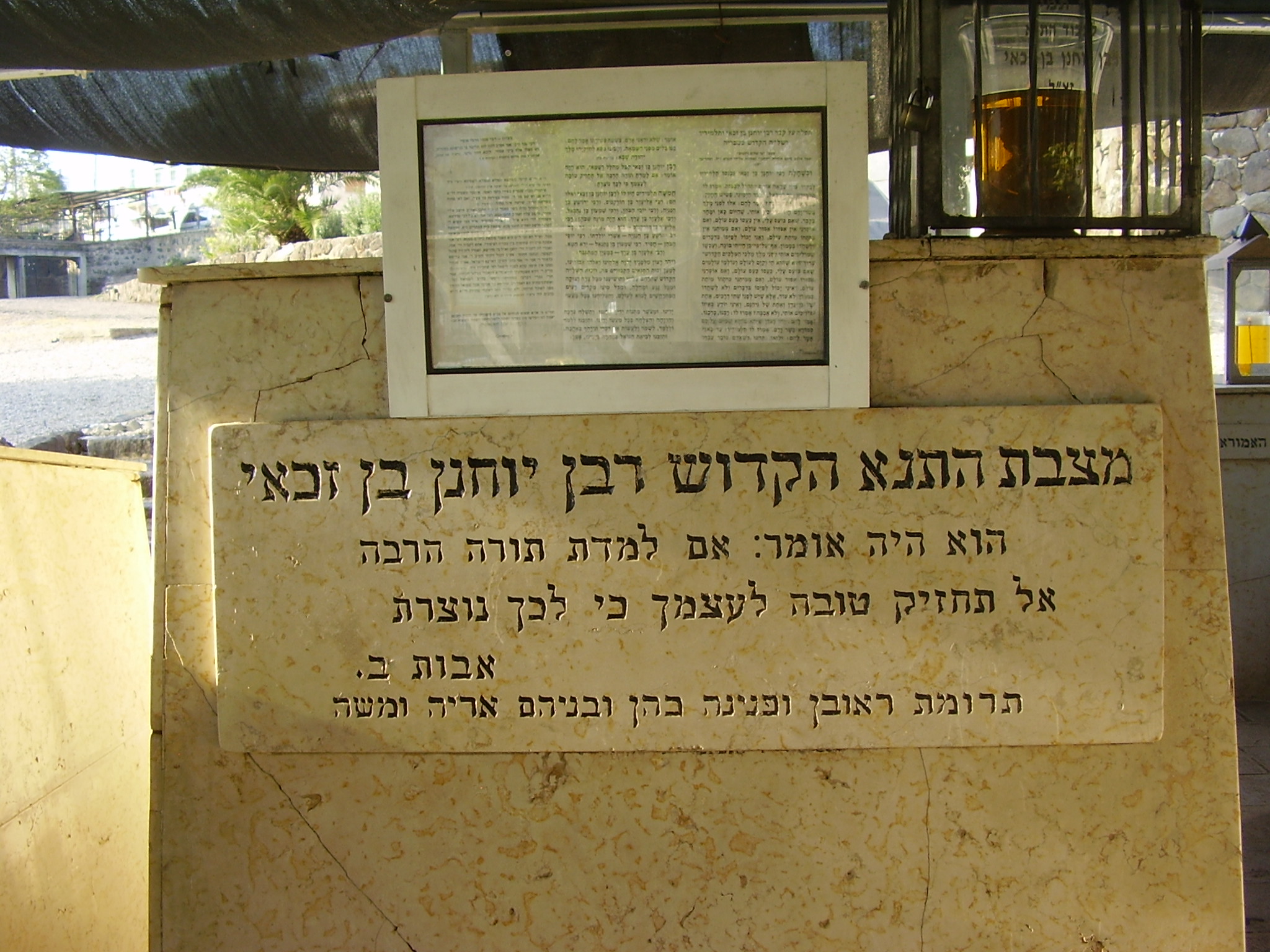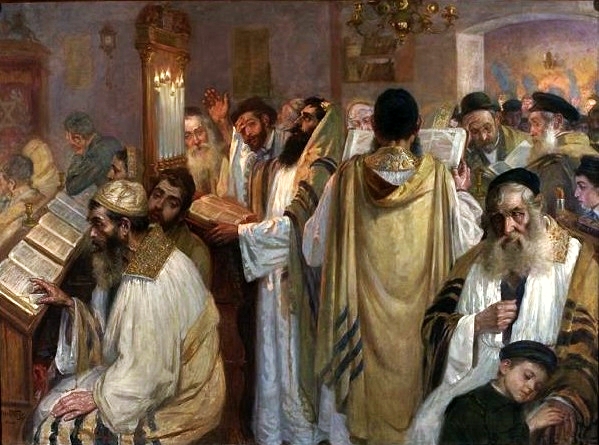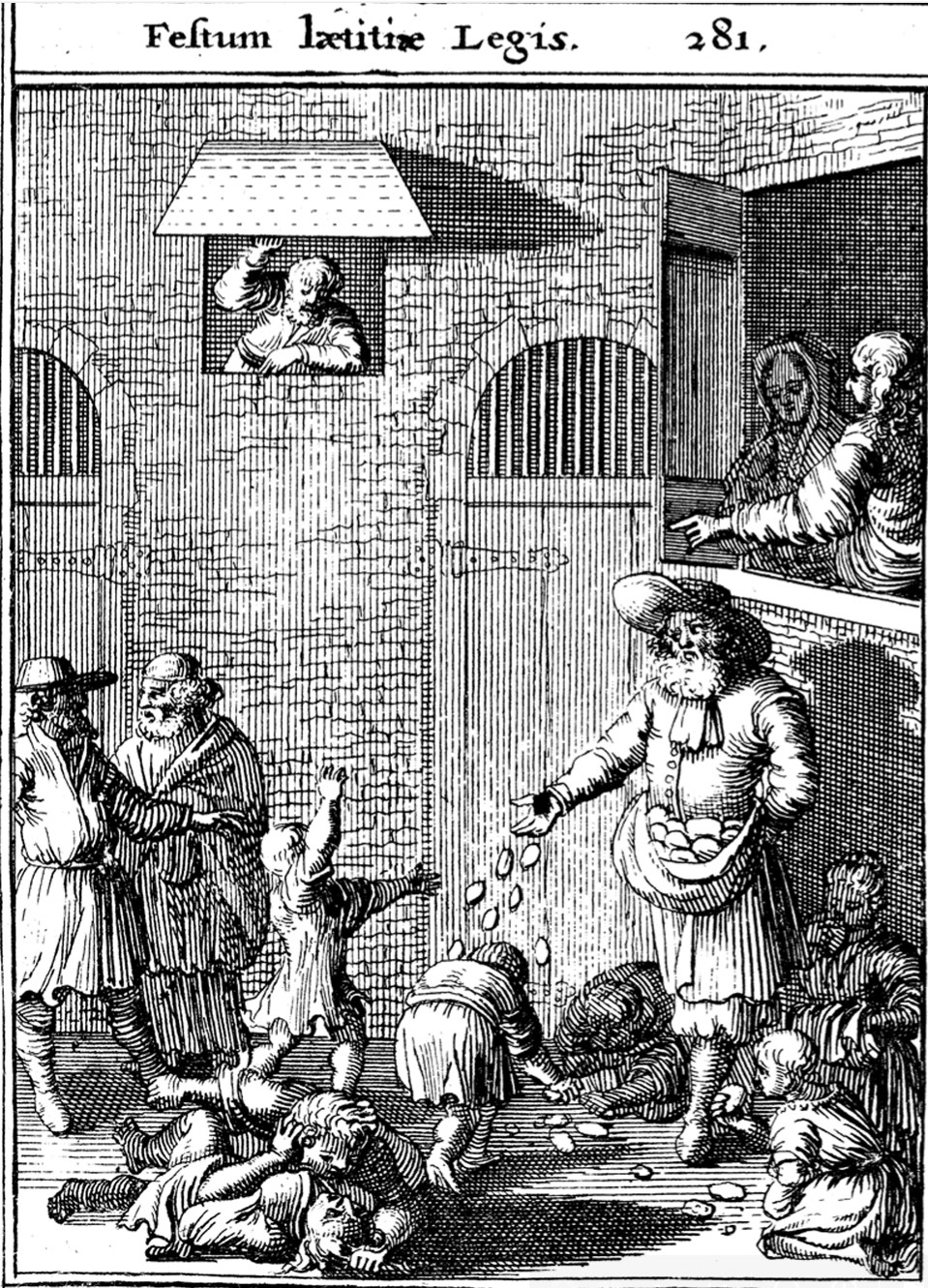|
Isaac Ben Abraham Of Dampierre
Isaac ben Abraham (יצחק בן אברהם), also called Rabbi Isaac ha-Baḥur (Hebrew: ר"י הבחור or רבי יצחק הבחור, which translates to "Rabbi Isaac the Younger") and by its Hebrew acronym RIBA (ריב"א) or RIẒBA (ריצב"א), was a tosafist of the late twelfth and early thirteenth centuries. He succeeded his teacher Isaac ben Samuel as head of the school of Dampierre, after which place he is often called, as well as by the epithet Isaac ha-Baḥur ("the younger"), to distinguish him from his teacher, Isaac ben Samuel ha-Zaḳen ("the elder") (ר"י הזקן). Life Together with his brother, Samson ben Abraham of Sens, Isaac lived as a youth at Troyes, where he attended the lectures of Jacob Tam, and afterward at Sens, before the two studied together at Dampierre. Isaac died at Dampierre prior to 1210, not long before his brother Samson emigrated to Palestine. Isaac was one of the French rabbis to whom Meïr ben Todros Abulafia addressed ... [...More Info...] [...Related Items...] OR: [Wikipedia] [Google] [Baidu] |
Tosafist
The Tosafot, Tosafos or Tosfot () are medieval commentaries on the Talmud. They take the form of critical and explanatory glosses, printed, in almost all Talmud editions, on the outer margin and opposite Rashi's notes. The authors of the Tosafot are known as Tosafists; for a listing (see List of Tosafists.) Meaning of name The word ''tosafot'' literally means "additions". The reason for the title is a matter of dispute among modern scholars. Many of them, including Heinrich Graetz, think the glosses are so-called as additions to Rashi's commentary on the Talmud. In fact, the period of the Tosafot began immediately after Rashi had written his commentary; the first tosafists were Rashi's sons-in-law and grandsons, and the Tosafot consist mainly of strictures on Rashi's commentary. Others, especially Isaac Hirsch Weiss, object that many tosafot — particularly those of Isaiah di Trani — have no reference to Rashi. Weiss, followed by other scholars, asserts that ''tosa ... [...More Info...] [...Related Items...] OR: [Wikipedia] [Google] [Baidu] |
Heimann Joseph Michael
Heimann (Hayyim) Michael (April 12, 1792 – June 10, 1846) was a Hebrew bibliographer born at Hamburg. He showed great acuteness of mind in early childhood, had a phenomenal memory, and was an indefatigable student. He studied Talmudics and received private instruction in all the branches of a regular school education. He was a born bibliophile, and began to collect valuable works when still a boy of twelve. With his progress in Hebrew literature his love for books increased also, the result of which was his magnificent library of 862 manuscripts and 5,471 printed works, covering all branches of Hebrew literature. There were few books in his collection which he had not read, and he undertook the preparation of a full catalog of it. As far as he accomplished this task, it was the foundation of the ''Ozerot Hayyim, Katalog der Michael'schen Bibliothek'', Hamburg, 1848. Michael took an interest not only in Jewish literature, but in all the intellectual movements of the day, as is s ... [...More Info...] [...Related Items...] OR: [Wikipedia] [Google] [Baidu] |
12th-century French Rabbis
1 (one, unit, unity) is a number, numeral, and glyph. It is the first and smallest positive integer of the infinite sequence of natural numbers. This fundamental property has led to its unique uses in other fields, ranging from science to sports, where it commonly denotes the first, leading, or top thing in a group. 1 is the unit of counting or measurement, a determiner for singular nouns, and a gender-neutral pronoun. Historically, the representation of 1 evolved from ancient Sumerian and Babylonian symbols to the modern Arabic numeral. In mathematics, 1 is the multiplicative identity, meaning that any number multiplied by 1 equals the same number. 1 is by convention not considered a prime number. In digital technology, 1 represents the "on" state in binary code, the foundation of computing. Philosophically, 1 symbolizes the ultimate reality or source of existence in various traditions. In mathematics The number 1 is the first natural number after 0. Each natural number, ... [...More Info...] [...Related Items...] OR: [Wikipedia] [Google] [Baidu] |
Sefer Yetzirah
''Sefer Yetzirah'' ( ''Sēp̄er Yəṣīrā'', ''Book of Formation'', or ''Book of Creation'') is a work of Jewish mysticism. Early commentaries, such as the ''Kuzari'', treated it as a treatise on mathematical and linguistic theory, as opposed to one about Kabbalah. The word ''Yetzirah'' is more literally translated as "Formation"; the word ''B'riah'' is used for "Creation". The book is traditionally ascribed to the patriarch Abraham, although others attribute its writing to Rabbi Akiva or Adam. Modern scholars have not reached consensus on the question of its origins. According to Saadia Gaon, the objective of the book's author was to convey in writing how the things of our universe came into existence. Conversely, Judah Halevi asserts that the main objective of the book, with its various examples, is to give humans the means to understand the unity and omnipotence of God, which appear multiform on the one hand, and yet, are uniform. The famous opening words of the book are as f ... [...More Info...] [...Related Items...] OR: [Wikipedia] [Google] [Baidu] |
Shi'ur Qomah
The Shi’ur Qomah () or Dimensions of the Body is a midrashic text that is part of the hekhalot literature. It purports to record, in anthropomorphic terms, the secret names and precise measurements of God's corporeal limbs and parts. The majority of the text is recorded in the form of sayings or teachings that the angel Metatron revealed to the tanna Rabbi Ishmael, who transmitted it to his students and his contemporary, Rabbi Akiva. It is also an exegetical analysis of Song of Songs 5:11-16 and proclaims that anyone who studies it is guaranteed a portion in the World to Come. Provenance and interpretation Currently the text exists only in fragmentary form, and scholars have debated how to date it appropriately. Modern academic scholars of Jewish mysticism such as Gershom Scholem think that it is from “either the Tannaitic or the early Amoraic period.” However, in the 12th century, the rationalist Jewish philosopher Maimonides declared the text to be a Byzantine forg ... [...More Info...] [...Related Items...] OR: [Wikipedia] [Google] [Baidu] |
Merkabah Mysticism
Merkabah () or Merkavah mysticism (lit. Chariot mysticism) is a school of early Jewish mysticism (), centered on visions such as those found in Ezekiel 1 or in the hekhalot literature ("palaces" literature), concerning stories of ascents to the heavenly palaces and the Throne of God. The main corpus of the Merkabah literature was composed in the period 200–700 CE, although later references to the Chariot tradition can also be found in the literature of the Ashkenazi Hasidim in the Middle Ages. A major text in this tradition is the '' Maaseh Merkabah'' (). Etymology The noun ''merkavah'' "thing to ride in, cart" is derived from a verb, , with the general meaning "to ride". The word "chariot" is found 44 times in the Masoretic Text of the Hebrew Bible, most referring to normal chariots on earth. Although the concept of the Merkabah is associated with Ezekiel's vision, the word is not used in Ezekiel 1. However, when left untranslated, in English the Hebrew term ''merkav ... [...More Info...] [...Related Items...] OR: [Wikipedia] [Google] [Baidu] |
Gershom Scholem
Gershom Scholem (; 5 December 1897 – 21 February 1982) was an Israeli philosopher and historian. Widely regarded as the founder of modern academic study of the Kabbalah, Scholem was appointed the first professor of Jewish mysticism at Hebrew University of Jerusalem. Scholem and the Kabbalah Scholem is acknowledged as the single most significant figure in the recovery, collection, annotation, and registration into rigorous Jewish scholarship of the canonical bibliography of mysticism and scriptural commentary that runs through its primordial phase in the ''Sefer Yetzirah,'' its inauguration in the '' Bahir,'' its exegesis in the ''Pardes'' and the ''Zohar'' to its cosmogonic, apocalyptic climax in Isaac Luria's '' Ein Sof'' that is known collectively as Kabbalah. After generations of demoralization and assimilation in the European Enlightenment, the disappointment of messianic hopes, the famine of 1916 in Palestine, and in the midst of the catastrophe of the Final Solution i ... [...More Info...] [...Related Items...] OR: [Wikipedia] [Google] [Baidu] |
Haggahot Maimuniyyot
''Haggahot Maimuniyyot'' () is a 13th-century halakhic work authored by Meir HaKohen. It is one of the most important sources for the halakhic rulings of the scholars of Germany and France, and it is one of the defining halakhic works of the Ashkenazi tosafists. The work consists of supplemental notes () to the ''Mishneh Torah'' of Maimonides, with the objective of imparting contemporary Sephardic thought to Jews in Germany and France, while juxtaposing it to contemporary Ashkenazi halakhic customs. Publication The work may originally have been written on the margins of the ''Mishneh Torah'', as it appears in early manuscripts. The first publication was in the 1509 Constantinople edition of the ''Mishneh Torah''. The work was later published again in 1524 in Venice. There are differences between the editions of 1509 and 1524, some of which are material. The wording of the glosses in the Venice edition (from which the later editions were printed) is more original and the author g ... [...More Info...] [...Related Items...] OR: [Wikipedia] [Google] [Baidu] |
Yom Kippur
Yom Kippur ( ; , ) is the holiest day of the year in Judaism. It occurs annually on the 10th of Tishrei, corresponding to a date in late September or early October. For traditional Jewish people, it is primarily centered on atonement and repentance. The day's main observances consist of full fasting and asceticism, both accompanied by extended prayer services (usually at synagogue) and sin confessions. Some minor Jewish denominations, such as Reconstructionist Judaism, focus less on sins and more on one's goals and accomplishments and setting yearly intentions. Alongside the related holiday of Rosh Hashanah, Yom Kippur is one of the two components of the High Holy Days of Judaism. It is also the last of the Ten Days of Repentance. Name The formal Hebrew name of the holiday is , 'day fthe atonements'. This name is used in the Bible, Mishnah, and Shulchan Aruch. The word 'atonement' is one of many Biblical Hebrew words which, while using a grammatical plural form, ... [...More Info...] [...Related Items...] OR: [Wikipedia] [Google] [Baidu] |
Selichah
Selichot (, singular: , ''səliḥā'') are Jewish penitential poems and prayers, especially those said in the period leading up to the High Holidays, and on fast days. The Thirteen Attributes of Mercy are a central theme throughout these prayers. Selichot of the High Holidays In the Sephardic tradition, recital of Selichot in preparation for the High Holidays begins on the second day of the Hebrew month of Elul. In the Ashkenazi tradition, in years where the first day of Rosh Hashanah begins on a Thursday or Saturday, selichot are recited from the Saturday night before Rosh Hashanah. If, however, the first day of Rosh Hashanah falls on a Monday or Tuesday, selichot are recited from the Saturday night more than a week before Rosh Hashanah to ensure that it is recited at least four times. This may be because originally the pious would fast for ten days during the season of repentance, and four days before Rosh Hashanah were added to compensate for the four of the Ten Days ... [...More Info...] [...Related Items...] OR: [Wikipedia] [Google] [Baidu] |
Simchat Torah
Simchat Torah (; Ashkenazi: ), also spelled Simhat Torah, is a Jewish holiday that celebrates and marks the conclusion of the annual cycle of public Torah readings, and the beginning of a new cycle. Simchat Torah is a component of the Hebrew Bible, Biblical Jewish holiday of ''Shemini Atzeret'' ("Eighth Day of Assembly"), which follows immediately after the festival of Sukkot in the month of Tishrei (occurring in September or October on the Gregorian calendar). Simchat Torah's main celebrations occur in the synagogue during evening and morning services. In many Orthodox Judaism, Orthodox as well as many Conservative Judaism, Conservative congregations, this is the only time of year on which the Sefer Torah, Torah scrolls are taken out of the Ark (synagogue), ark and read at ''night''. In the morning, the last ''parashah'' of Deuteronomy and the first ''parashah'' of Book of Genesis, Genesis are read in the synagogue. On each occasion, when the ark is opened, the worshippers leave t ... [...More Info...] [...Related Items...] OR: [Wikipedia] [Google] [Baidu] |
Meïr Of Rothenburg
Meir of Rothenburg ( 1215 – 2 May 1293) was a German Rabbi and poet, as well as a major contributing author of the ''tosafot'' on Rashi's commentary on the Talmud. He is also known as Meir ben Baruch (), and by the Hebrew language acronym Maharam of Rothenburg ("Our Teacher, Rabbi Meir", ). He was referred to by Rabbi Menachem Meiri as the "greatest Jewish leader of '' Zarfat''" ( Medieval Hebrew for France, a reference to Charlemagne's rule of Germany) alive at the time. Biography Rabbi Meir was born between 1215 and 1220 in the Free City of Worms. His first teacher was his father, who descended from a long line of rabbis. He continued his training in Würzburg under Isaac ben Moses of Vienna and in France, where he remained until 1242, his teachers being Yechiel of Paris, Samuel ben Solomon of Falaise, and Samuel of Évreux, witnessing the burning of the Talmud on 17 June 1242, in Paris. He then settled in Rothenburg ob der Tauber, opening a yeshiva in his house. Afte ... [...More Info...] [...Related Items...] OR: [Wikipedia] [Google] [Baidu] |






